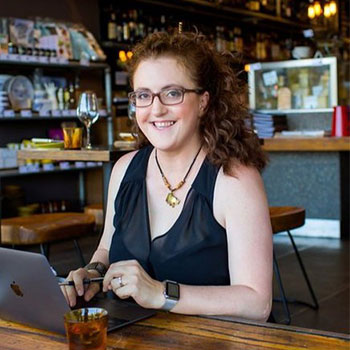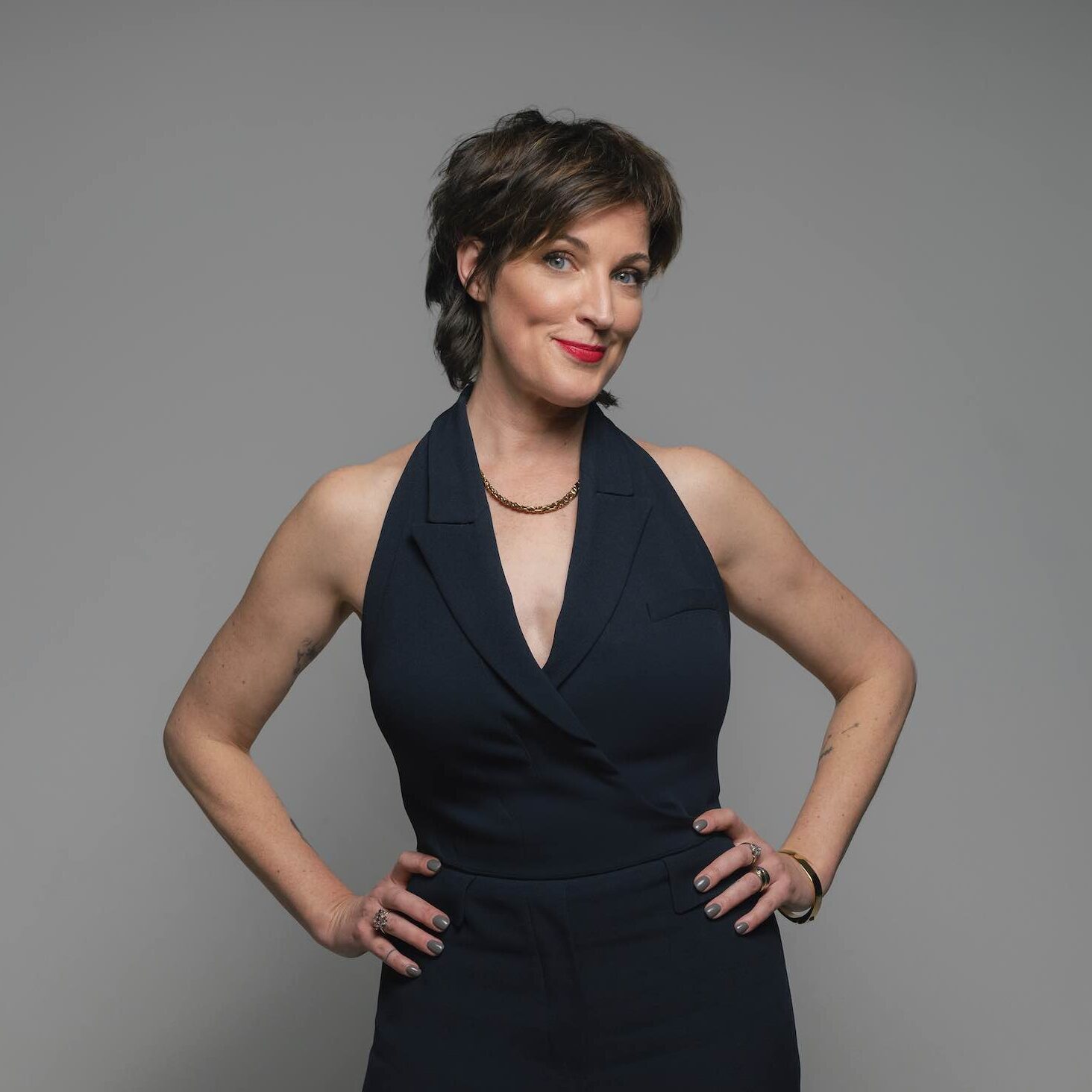
In Conversation with Stephanie Gaddin

Stephanie Gaddin has been in the print industry for over 13 years in a variety of communications and technology and technology-driven roles. She has honed and learned a wealth of skills and knowledge about the intersection of print and technology, which has served her well over this time.
A long-time member and supporter of Women in Print, and now the Treasurer and an appointed Board Officer, Stephanie is currently the Editor of Digital Image Magazine and the Managing Director of Rocking Rose, a bespoke digital and technology agency. Digital Image Magazine represents and reports on the wide format and digital signage sector, with a cross-over into speciality and textile printing.
Stephanie is also the Australian representative for International Print Day, a global movement to annually celebrate, highlight and promote all forms of print and visual communication.
What is it that excites you about the industry you're in?
The creativity, the opportunity, the space to make beautiful things. The sheer breadth of the opportunities. When you say print, people immediately think “newspapers” or “printed books,” – but there is so much more to printing. And to be blunt, graphic design for printing is a specialised skill all on its own. Learning how to create beautiful things digitally is the tip of the iceberg.
I absolutely love the fact that in this industry, you could one day work for a signage company that wraps Class One speedboats competing in the USA and then fly home to paint a wall with custom artwork the next on the Gold Coast. Or you could travel across the country with a supercar racing team, fixing up and replacing artwork and decals on the car as it competes on the supercar circuit. From motorbikes to cars, trains and boats – if it moves, it can be wrapped. Textile designers end up working on the cutting edge of fashion, creating fabrics that are one of a kind for fashion designers. They consider things like not just the print on the fabric but how that print will shape and fold when cut into a garment pattern and how the light will fall on it when worn. That’s the breadth of working in the Printing industry that is often not front and centre in the view of students and grads. It’s thrilling to me to see what the industry produces, and without a doubt, in every issue of the magazine, there’s at least one surprise that I find so exciting.
Is it a man's world? How do women make their mark?
There is a perception that it’s a man’s world. And many industry events can be quite “blokey” to use a colloquialism. However, the signage industry is, for the most part, made up of family owned and operated businesses. This usually means a husband and wife team and some or all of their children. So there have always been a lot more women in the industry than were perhaps visible. However, that is changing with women increasingly taking their place in the zeitgeist, visible and proud to be in signage. In recent years, are we seeing more women as signage installers than book-keepers and office managers? We are, and increasingly women are starting their own signage businesses or contracting as installers by themselves under their own brands. This excites me enormously; why can’t women climb a scaffold with a toolbelt and put up some damn good signage? Of course, they can.
What path did you take to get here?
My background is mainly in software development; I came into the industry 13 years ago when I started working for a software company called Dolphin Worxs. I moved rapidly into their Business Manager in Australia and then the global CEO. They make what is called MIS software, and I helped them expand into eight countries worldwide. An MIS is the industry term for business management and quoting software for printing. At that stage, I primarily dealt with commercial printers, the companies that make business cards, flyers, books, pamphlets, and things printed on paper. After I left, I consulted for a short time outside of printing in the tech start-up scene in Melbourne. Through 2020 and some of 2021, I worked for a local council in their covid response team, helping their Aged & Disability clients access services through Zoom and other online tools and channels. I then worked for the Print & Visual Communications Association as their National Member and Communications Manager – an industry body for commercial printers. More recently, I was contracted to The Real Media Collective for a period, assisting them as Australia exited the “time of lockdowns” through to the end of 2021. I am now the Editor of Digital Image Magazine, an industry publication for the Sign and Display sector of print.
What challenges face your industry right now?
The biggest ongoing challenge has always been the pipeline of talent coming in. Apprentices are few and far between and have been in decline long before Covid. In my view, the industry struggles somewhat with a branding issue. It’s not well known that you can work with supercars, racing boats, massive brands in stadium installations, or custom fashion and textile designing.
I think the industry does struggle with a perception of relevance, which is absolute nonsense, in my opinion. The simple fact is this, as long as people buy “things,” those “things” will need to be sold (all marketing, Out of Home signage, letterbox advertising, POS displays). Also, those “things” will need to be packaged ( another big area of growth within print), and finally, the “things” will need to be transported to the retail stores or delivered to the end consumer. Sign and display are integral to every single stage of that process, from the POS media in retail, the big digital or printed billboards, to the building signage for every single company in the supply chain. Lastly, the branding of the shipping trucks and the delivery vans worldwide. Sign And display are at every touchpoint of the consumer journey.
How would you sell the industry to someone looking for the right job?
There are multiple opportunities to be creative in this space; graphic design for printing is vastly different from designing for digital spaces. And even then, a graphic designer who works on signage requires different skills from one who produces artwork for printing on paper. Whatever your inclination, there is a space for you Copywriting is another space to be brilliant and hone your communication skills; it takes enormous creativity and talent to communicate a brand in 5 words for a billboard on a freeway instead of a 100-word paragraph on a pamphlet. And especially when working on collateral for charities and non-profits – where space is at a premium- you need to convert people instantly. The challenge is enormous, but the rewards are just as significant. Whatever your inclination, there is a space for you in this vast creative industry to make a difference.
Share it around…






